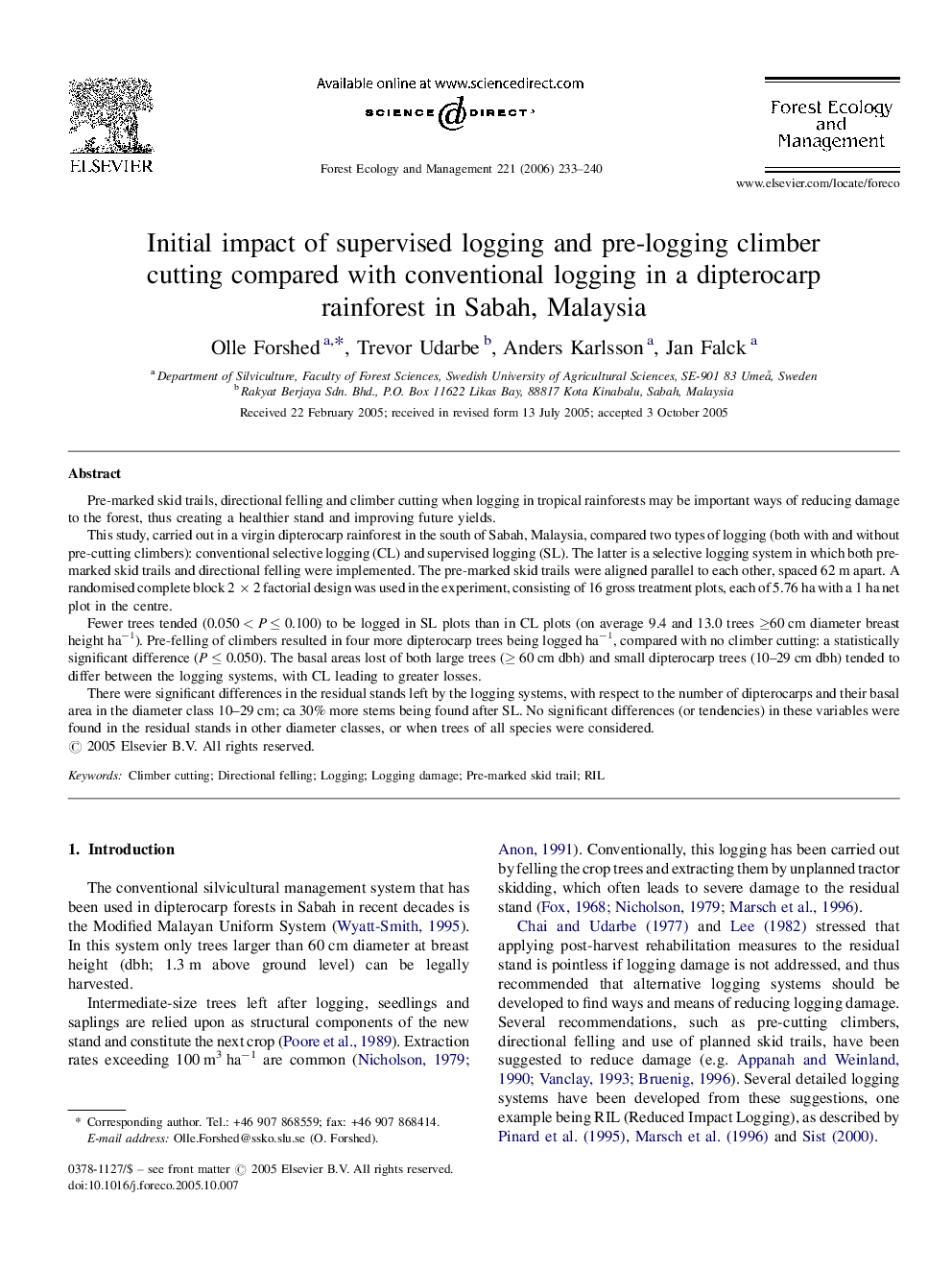| کد مقاله | کد نشریه | سال انتشار | مقاله انگلیسی | نسخه تمام متن |
|---|---|---|---|---|
| 90964 | 159416 | 2006 | 8 صفحه PDF | دانلود رایگان |

Pre-marked skid trails, directional felling and climber cutting when logging in tropical rainforests may be important ways of reducing damage to the forest, thus creating a healthier stand and improving future yields.This study, carried out in a virgin dipterocarp rainforest in the south of Sabah, Malaysia, compared two types of logging (both with and without pre-cutting climbers): conventional selective logging (CL) and supervised logging (SL). The latter is a selective logging system in which both pre-marked skid trails and directional felling were implemented. The pre-marked skid trails were aligned parallel to each other, spaced 62 m apart. A randomised complete block 2 × 2 factorial design was used in the experiment, consisting of 16 gross treatment plots, each of 5.76 ha with a 1 ha net plot in the centre.Fewer trees tended (0.050 < P ≤ 0.100) to be logged in SL plots than in CL plots (on average 9.4 and 13.0 trees ≥60 cm diameter breast height ha−1). Pre-felling of climbers resulted in four more dipterocarp trees being logged ha−1, compared with no climber cutting: a statistically significant difference (P ≤ 0.050). The basal areas lost of both large trees (≥ 60 cm dbh) and small dipterocarp trees (10–29 cm dbh) tended to differ between the logging systems, with CL leading to greater losses.There were significant differences in the residual stands left by the logging systems, with respect to the number of dipterocarps and their basal area in the diameter class 10–29 cm; ca 30% more stems being found after SL. No significant differences (or tendencies) in these variables were found in the residual stands in other diameter classes, or when trees of all species were considered.
Journal: Forest Ecology and Management - Volume 221, Issues 1–3, 10 January 2006, Pages 233–240